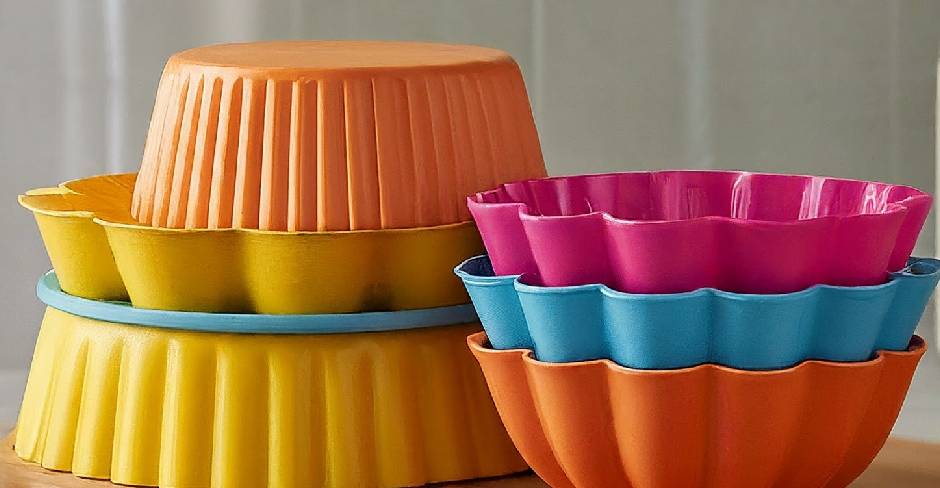Total ₹684.00

Cake pans, moulds, tins – whatever you call them, these unassuming baking tools are the foundation for countless cake creations. From classic layer cakes to whimsical cupcakes and intricate bundt cakes, the right mould sets the stage for baking success. In this blog, we’ll delve into the world of cake moulds, exploring different types, materials, and their impact on your baking journey.
Shape Up Your Baking!
The world of cake moulds extends far beyond the classic round pan. Let’s explore some popular shapes:

- Round: The workhorse of cake pans, round moulds are ideal for layered cakes, bundt cakes, and cheesecakes. They offer even heat distribution and come in various sizes, from single-serve to multi-tier cakes.
- Loaf: Perfect for pound cakes, banana bread, and fruitcakes, loaf pans ensure even baking and a beautiful rectangular shape.
- Square: Similar to loaf pans, square moulds are ideal for bar cakes, brownies, and cutting into uniform squares for easy serving.
- Sheet Pans: These large, rectangular pans are perfect for baking thin cakes like jelly rolls or creating a base for layer cakes.
- Specialty Shapes: Let your imagination run wild! From hearts and stars to numbers and animals, specialty moulds allow you to create cakes for any theme or occasion.
Material Matters:
The material of your cake mould plays a vital role in baking:
- Aluminum: A classic choice, aluminum moulds are affordable and offer excellent heat conductivity. However, they often require greasing to prevent sticking.
- Non-Stick Coated Aluminum: Eliminates the need for greasing and makes cake release a breeze. However, these pans may need to be replaced more frequently.
- Silicone: Flexible and non-stick, silicone moulds are great for delicate cakes and easy removal. They may not offer the same even heat distribution as metal pans.
- Glass: Offers excellent heat distribution and allows you to monitor baking progress. Glass pans may be heavier and require a slightly lower baking temperature.
Choosing the Right Mould:
Here are some key factors to consider when choosing a cake mould:
- Recipe: Follow your recipe’s recommendations for the size and shape of the mould.
- Material: Non-stick is ideal for beginners, while seasoned bakers may prefer aluminum for heat conductivity.
- Durability: Consider how often you plan to use the mould and choose a material that can withstand frequent use.
- Personal Style: Don’t be afraid to experiment! Specialty shapes can add a fun touch to your cakes.
Beyond the Mould:
No matter your chosen mould, proper preparation is key for successful baking. Grease and flour your pan according to the recipe to ensure easy cake release. Parchment paper liners can also provide added insurance against sticking.
With the right cake mould and a sprinkle of knowledge, you’re well on your way to baking beautiful and delicious cakes!

Bonus Tip:
Looking for a unique and practical gift for a baking enthusiast? A set of high-quality cake moulds in different shapes and sizes is sure to be a hit!
By understanding the different types and functions of cake moulds, you can unlock a world of baking possibilities. So get out there, explore your options, and let your creativity bloom in the kitchen!pen_sparktunesharemore_vert



